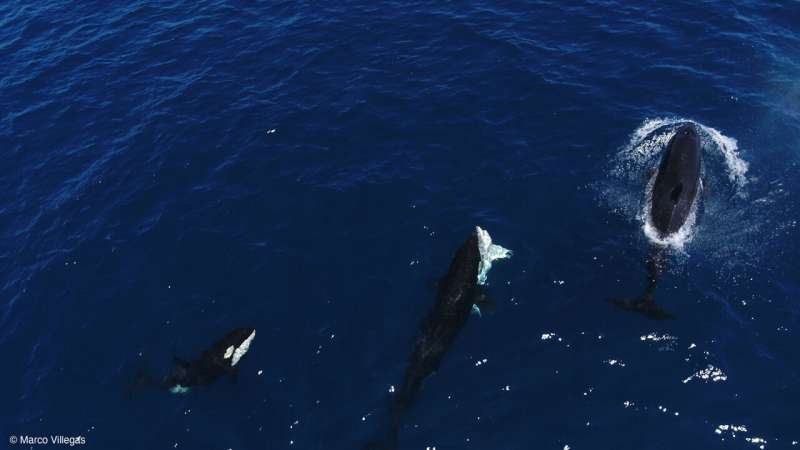
A specialized pod of orcas, known as Moctezuma’s pod, has been observed hunting young great white sharks in the Gulf of California. These marine predators employ a unique technique, flipping the sharks upside down to access their nutrient-rich livers. This behavior suggests a significant shift in the hunting patterns of orcas, revealing a potential increase in their predation on juvenile white sharks.
The research, published in Frontiers in Marine Science, documents two distinct hunting events, during which the orcas killed three juvenile white sharks. Marine biologist Erick Higuera Rivas, who led the study, emphasized the advanced intelligence and strategic thinking of the orcas. He noted that this hunting method showcases their sophisticated social learning, as techniques are passed down through generations within their pods.
Observations indicate that during the first hunt in August 2020, five orcas successfully targeted a juvenile white shark by driving it to the surface and flipping it on its back. They then submerged, re-emerging with the shark’s liver. A similar event occurred in August 2022, where the orcas again employed this technique, leading to the extraction of the liver from another juvenile shark.
The act of turning a shark upside down induces a state known as tonic immobility, which temporarily immobilizes the shark, making it easier for the orcas to feed. Higuera explained that this method minimizes the risk of injury from bites, particularly when targeting younger sharks that may lack the defensive experience of their adult counterparts.
Dr. Salvador Jorgensen, a co-author of the study and researcher at California State University, pointed out that this is the first documented case of orcas consistently hunting juvenile white sharks. He noted that adult white sharks typically exhibit quick escape responses when orcas are present, often vacating seasonal habitats for extended periods. In contrast, juvenile sharks may not yet possess learned anti-predator behaviors.
The identification of the orca pod as Moctezuma’s pod, named after a notable member, highlights their previous hunting successes against rays and other shark species. This adaptability may allow them to exploit new opportunities as environmental changes affect white shark distributions.
Changes in climate and ocean conditions, such as those seen during El Niño events, have impacted the nursery areas for white sharks, increasing their presence in the Gulf of California. This shift may expose juvenile sharks to predation from orcas more frequently, creating a new dynamic in the region’s marine ecosystem.
While these observations raise intriguing questions about orca feeding habits, researchers plan to conduct a broader survey to ascertain whether this predation behavior is common or limited to specific circumstances. Funding and logistical challenges complicate this effort, as fieldwork is costly and orca hunts are unpredictable.
Co-author Dr. Francesca Pancaldi of the Instituto Politécnico Nacional Centro Interdisciplinario de Ciencias Marinas emphasized the importance of understanding orca feeding behaviors. Gathering comprehensive data will help identify critical habitats and inform conservation strategies to mitigate human impact on these marine ecosystems.
This research underscores the complex interactions within marine food webs and highlights the adaptability of species like orcas in response to environmental changes. Future studies will be crucial in determining the long-term implications of these predation patterns on both orca and shark populations in the Gulf of California.






